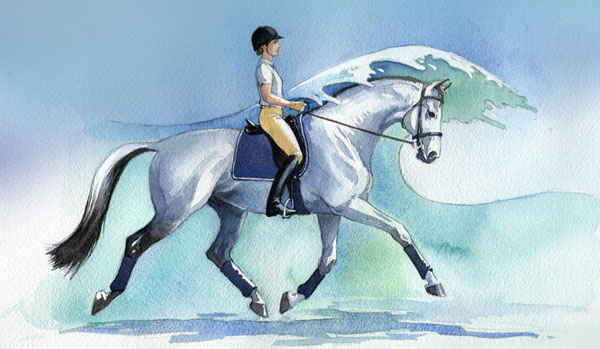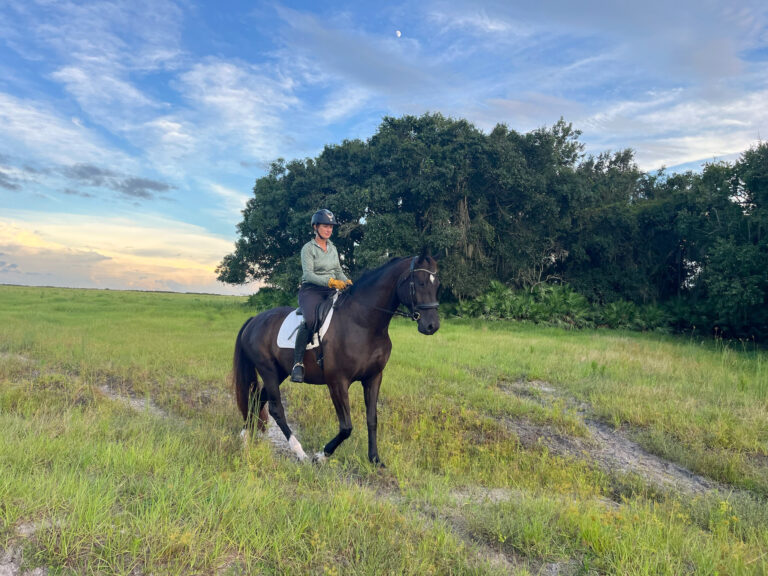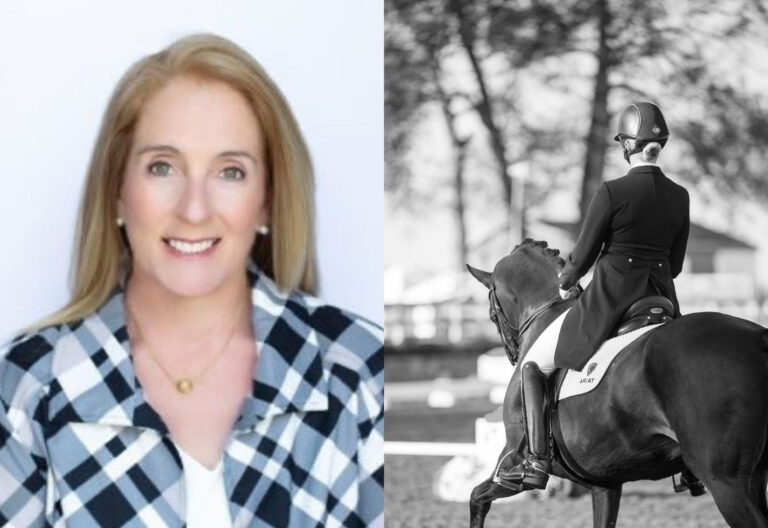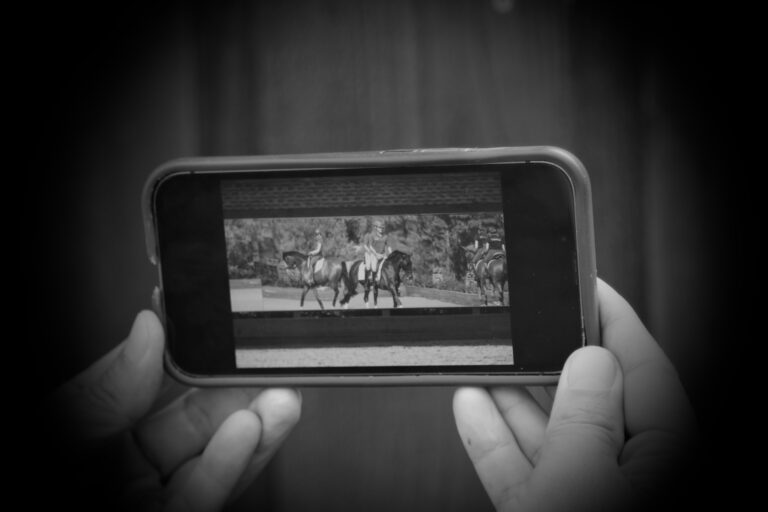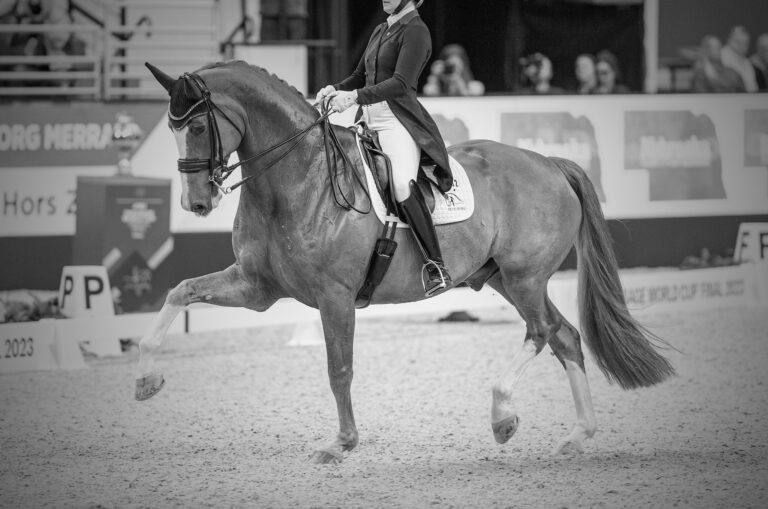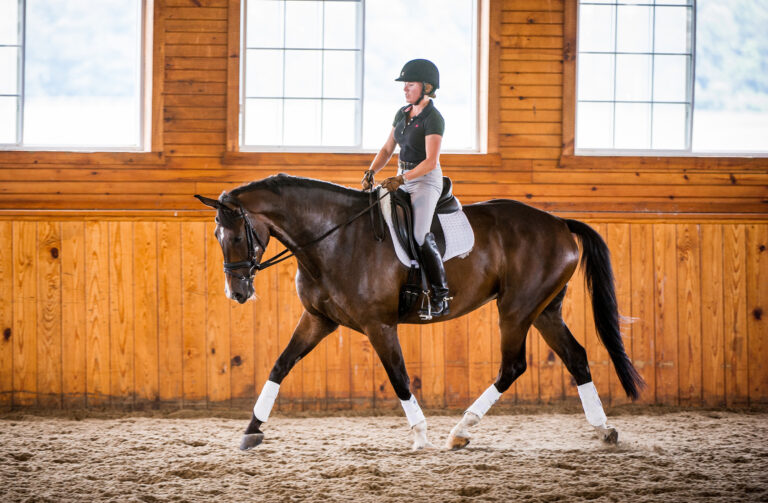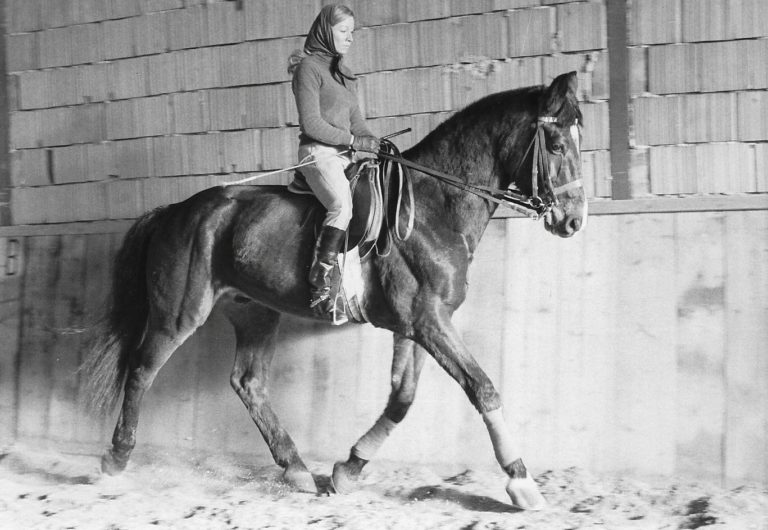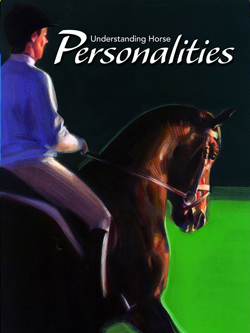For most of us, there is limited time each week to devote to our riding, even though it is very important in our lives. We have serious goals and we all hope to improve each year, perhaps dreaming of the FEI arena one day with our beloved horses. Many people have one lesson per week, a mere 45 minutes. If we count that up for the year, that is less than 40 hours. So how can we make the very most of our lessons? Here are five tips I can offer you:
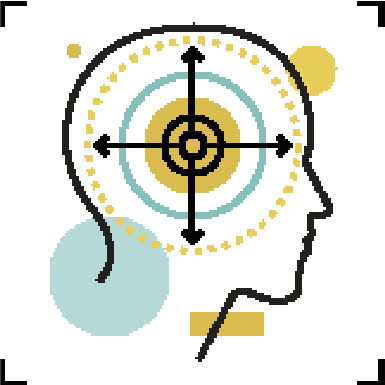
1. Pick an Appropriate Instructor
You must have a good support system around you to be in the best state for learning. Find an instructor who fits with your temperament, capabilities and goals. It’s important to watch whomever you want to train with teach other students and to watch them ride and compete. Spend the time to see if the teaching is systematic, easy to understand and what kind of emotional state the students and horses finish the session in. I personally prefer an instructor who is very direct and clearly states when I have done something correct or incorrect. I also want someone who is solution-oriented and operates under the premise that he or she knows I am trying my best to do what he or she is asking of me.
2. Be a Receptive Student
One of the skills I had to learn is how to be a receptive student. The instructors we choose to learn from are there to guide us and help make us better riders and horse trainers. It took me a long time to learn how not to take what they were saying personally. The constructive criticism they are giving me is not a personal attack on me. They are trying to raise my bar and push me out of my comfort zone so I can grow. If you can start mastering this skill in your riding lessons, I find that it usually translates into other parts of your life as well.
Before you even get to your lesson, it’s good to take a moment to get into an open mindset. I tell myself when I go into a training session that whatever happens, I’m going to try to be open-minded to whatever my instructor tells me. Be OK with somebody talking about something new—experiment a little. Riding is not a static state. We have to know the theory behind what we are trying to achieve and ultimately we are looking to achieve a standard that will develop the horse to his highest emotional and physical state and produce 10s in the show ring. Be willing to be creative and flexible about to how we get from Point A to Point B. Horses do not necessarily follow the text books in their development.
3. Film Your Lessons
While all of us would love to have a trainer helping us to learn every day and pushing us to improve, we don’t all have that luxury. Many of us live too far away from our trainer for regular lessons or can afford to spend only a certain amount on our education each year. But everyone can use video to make the most of their lessons or even their rides at home without a trainer. When I take lessons or school at a horse show I always film it. Don’t wait to watch it. Really try to watch it as soon as you can. We all have to get desensitized to looking at ourselves on camera. The best thing is to watch it immediately after you’ve taken care of your horse, while the ride is still fresh in your mind. You need to combine what you feel in your lesson and what it really looks like. Visual backup is good confirmation, as a lot of times it looks better than it feels. This will really help you maximize your lessons.
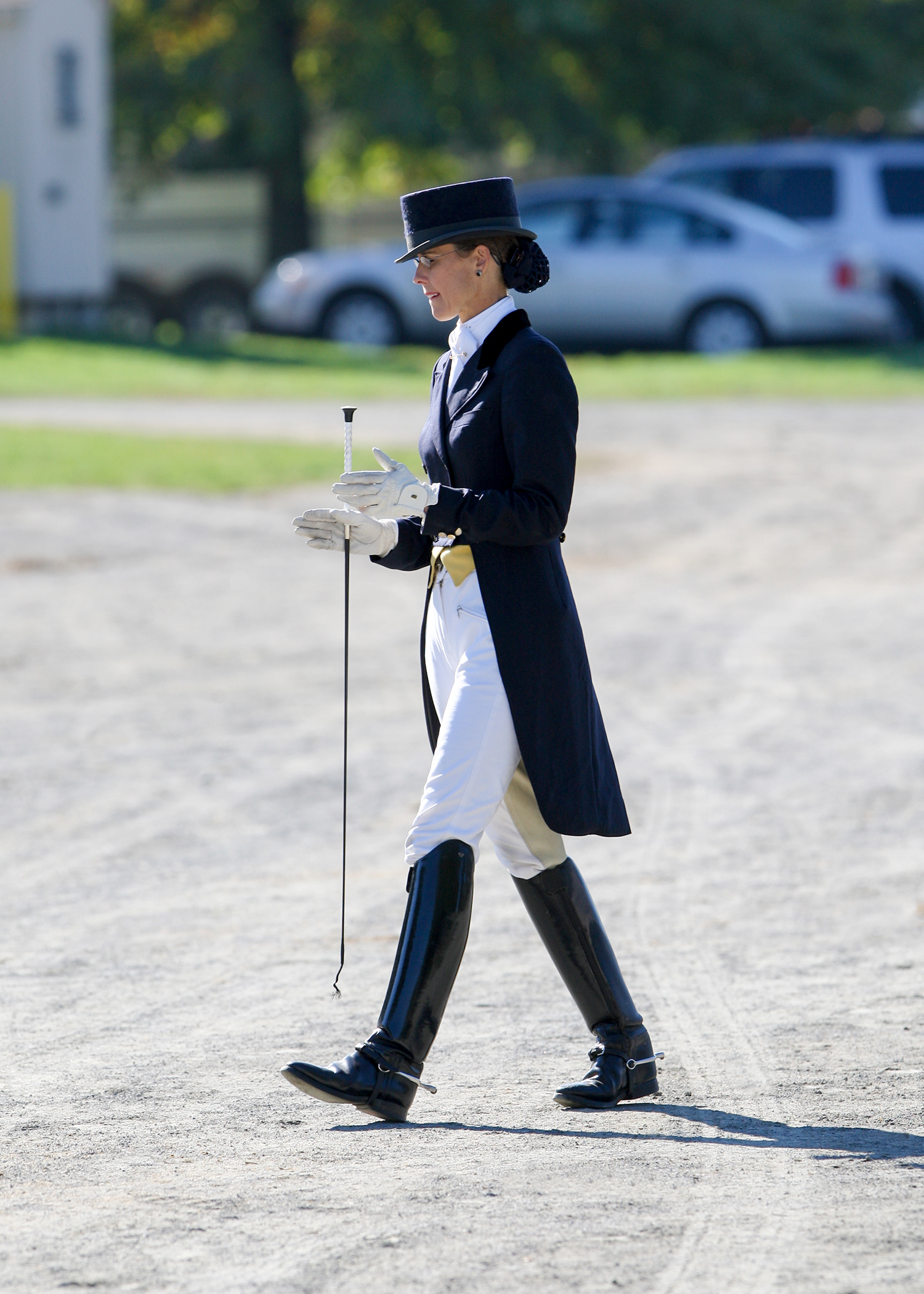
(Susanjstickle.com)
4. Learn to Be Present
Whether you’re coping with the pressure of riding down centerline at the Olympics or wanting to make the jump from First to Second Level, learning to focus and deal with your emotions each day is key. I have benefited greatly from training with a sports psychologist. It has been life-changing for me, as it meant finally having access to tools on how to deal with my own negative emotions and understand the source of them.
When I think about being focused for training, it means being as mentally and emotionally present and in the moment as possible. I’ve learned over the years how to get myself into a state where I am not concerned about what happened before or what’s happening next, but just be in the moment. That is like a muscle that you have to exercise and build. Commit to the fact that you’re “there” for your 45-minute riding lesson and if your mind starts to drift off, ask it gently to come back to the present moment. Just like you can learn to ride shoulder-in, you can learn to improve this ability in yourself.
Our mind is like a streaming ticker tape of chatter in the background. You must figure out how to acknowledge the chatter and let it pass through without it overtaking the main focus of your attention. Horses are wonderful for teaching us to stay in the moment and be present. They demand our full attention to ride effectively and safely. Many accidents in the saddle happen because the rider’s attention has strayed elsewhere and he or she was unaware of what the horse was preparing to do.
5. Quiet Your Inner Critic
Almost all of us deal with an inner critic in our heads who can take us from the present moment of learning and push us into reliving the past or worrying about the future. When I’m having the negative back talk in my brain, I’ve learned to sit there and challenge and question what I’m saying: Is this a fact or a feeling? Am I actually a failure or do I feel like a failure? Feelings are not necessarily facts.
A lot of the things we say to ourselves can be so incredibly negative, but much of the time it’s not a fact or truth. If I’m having negative thoughts in the riding, I look for outside feedback and rely on my instructor to tell me if I’m just thinking negatively or overreacting to what was said or what happened. Listen to your outside feedback. Your instructor will be a mirror with which you can check your reflection.
Be conscious of what the voice in your head is telling you and what you say out loud. I try to be very careful with what I’m telling myself about myself and very aware of what conversation I am having internally. It’s one thing to make a mistake, but it’s another thing to make a mistake and question your self-worth. Again, stick to the facts, not the feelings.
Our inner critic can often tempt us into spending a lot of energy worrying about situations or experiences. I prefer to be as prepared as possible for whatever may happen versus worried about something that hasn’t happened yet. Worrying is literally like living through a bad experience twice. Rely on your instructor’s experience to help you prepare for different situations.
Learning can be a very rewarding, as well as a very uncomfortable and frustrating, journey at times. It can put us in a vulnerable state, especially when we are attempting new skill sets, and it’s really important that you trust your instructor. Vulnerability means uncertainty, risk and emotional exposure. Riding forces you to really expose who you are on the inside, especially as you are the partner for an emotional horse who often mirrors your own emotions.
Emotions can be a problem for all of us when we ride—especially anger or frustration. When you are working on something that’s very hard or you’re being pushed a little too far outside your comfort zone, these emotions can present themselves without invitation. My best advice if you’re struggling and start to get angry is to literally stop and drop the reins. Breathe. Take a walk break and go back to fact-checking your inner critic. All riders deal with this. But you can mature into a state of being effective without being emotional with good instruction and experience. When training horses and riders, we must be systematic and not make emotionally driven decisions.
The End Goal
Over time you will be able to bring yourself into this focused mindset more easily and for longer periods of time. I don’t expect someone to be focused all the time or the horse to be focused all the time. You can concentrate for short bursts and then link those bursts to short walk breaks.
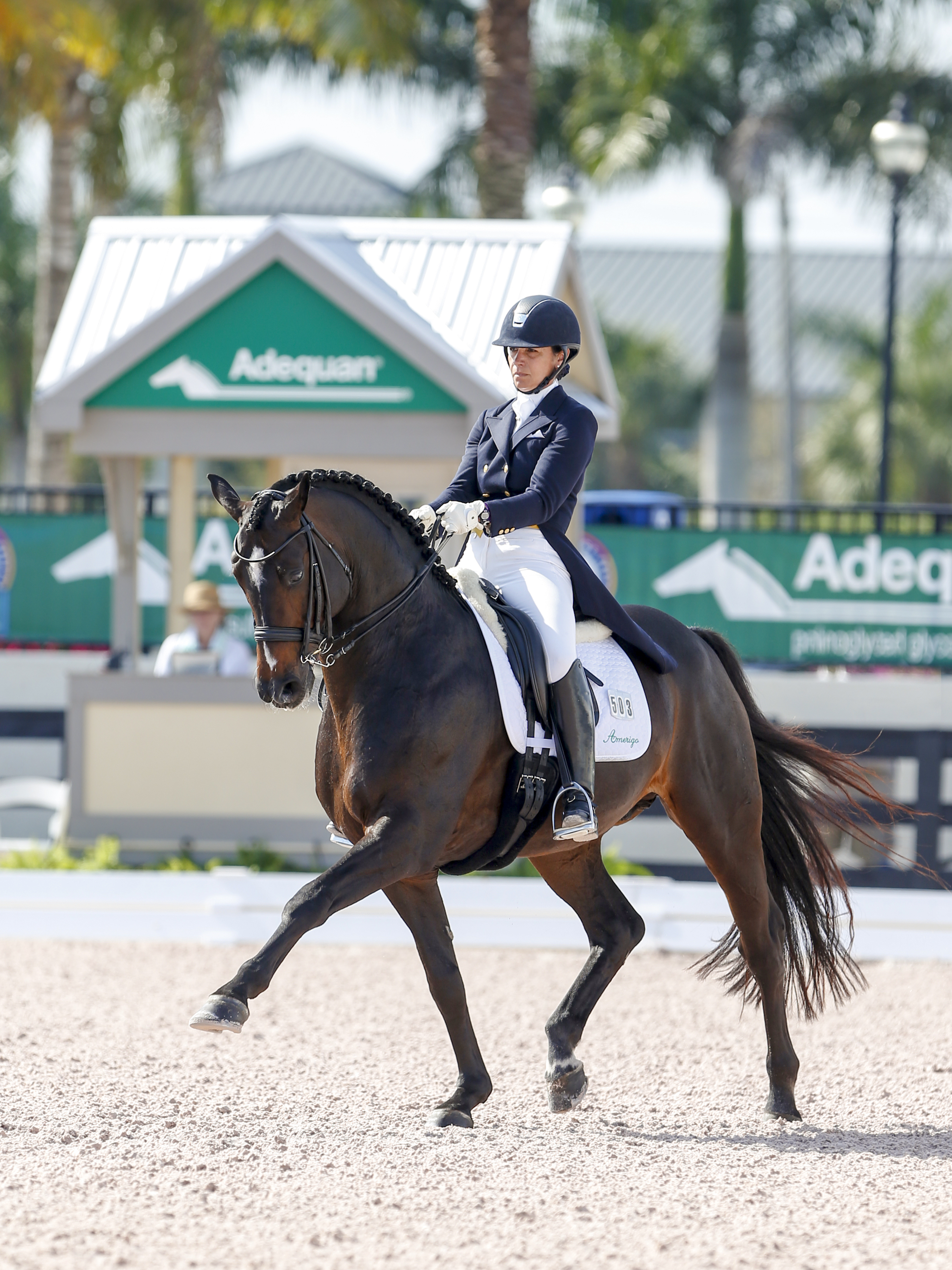
Allison Brock was a member of the 2016 bronze-medal-winning U.S. Olympic dressage team in Rio de Janeiro. She is a popular trainer and clinician and spends the winters in Wellington, Florida, and the summers in Keswick, Virginia.


